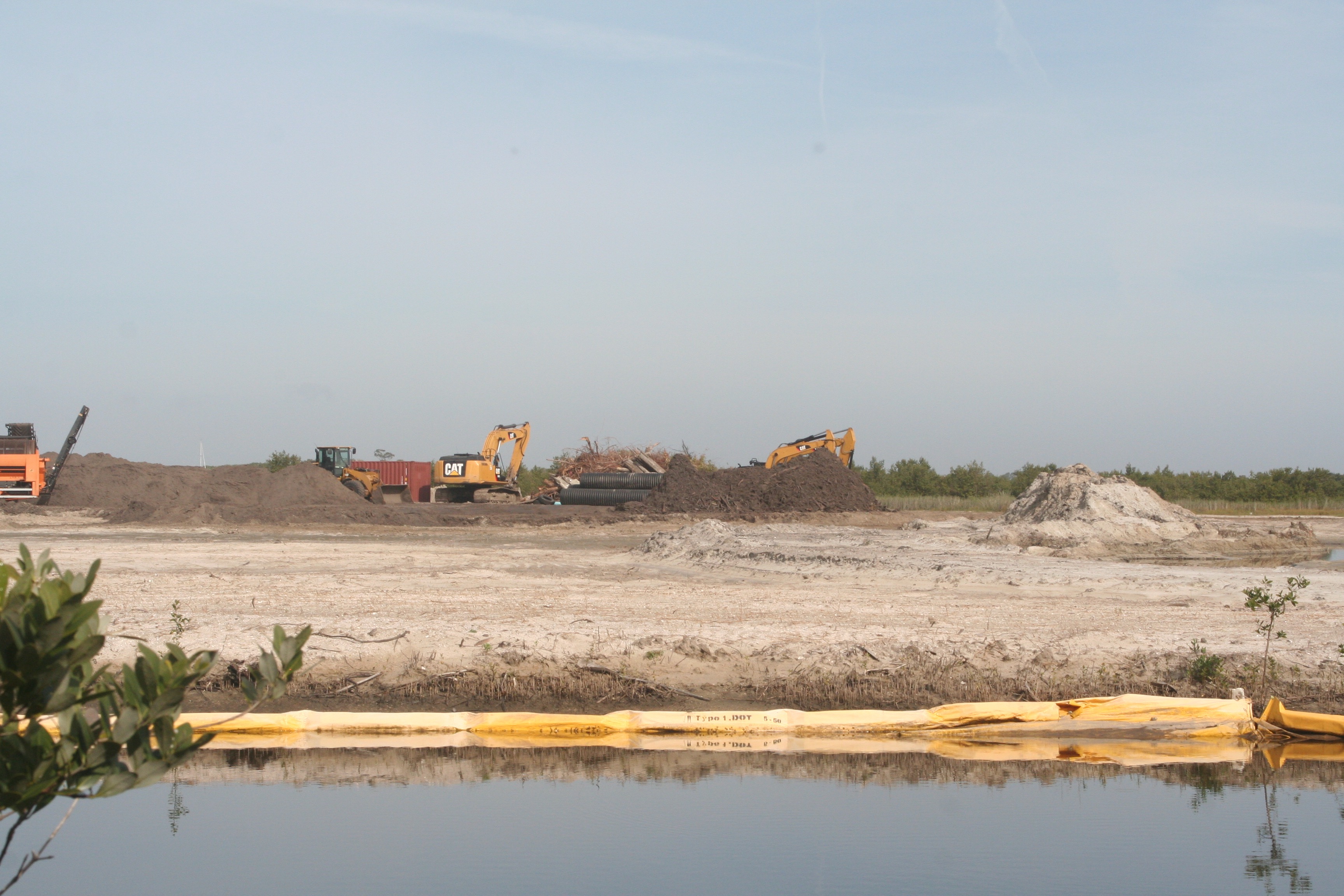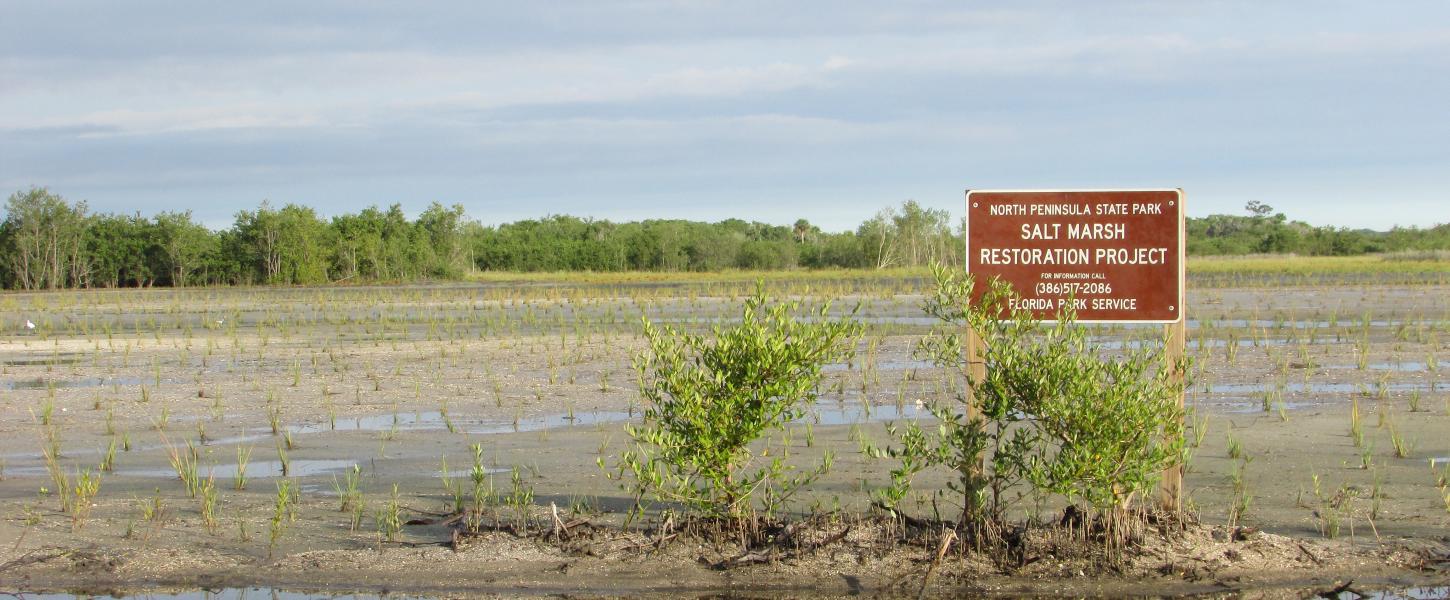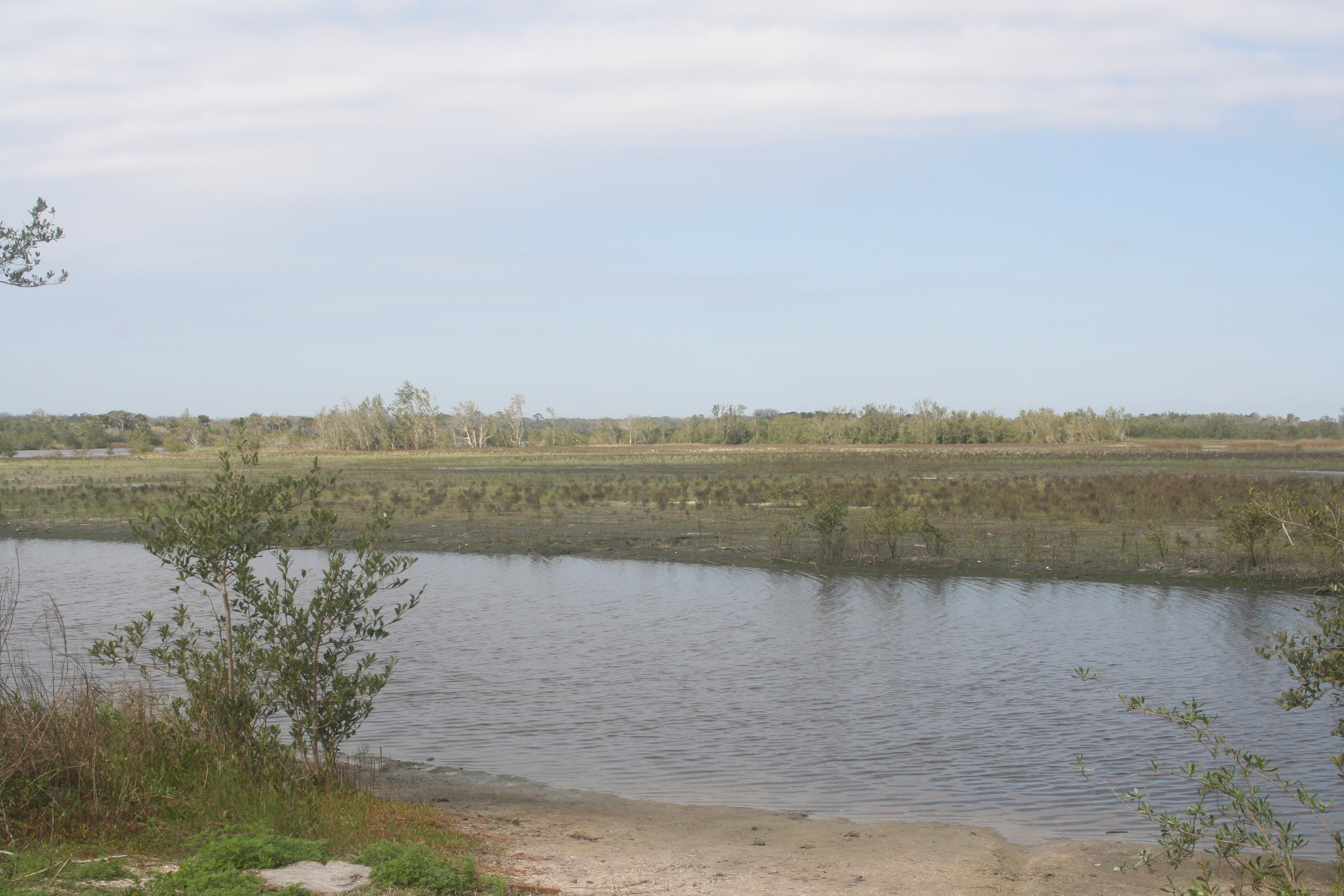
Salt Marsh Restoration

The west side of North Peninsula State Park historically consisted of naturally occurring salt marsh and the meandering Smith Creek. Salt marshes are important for many reasons. They provide nursery areas for fishes, shellfish and crustaceans. Marine life can hide from many of their predators in marsh vegetation because the shallow brackish area physically excludes larger fish.
Many of Florida’s popular marine fisheries species spend the early part of their lives protected in salt marshes. Young fish often have a varied diet, foraging for food in the muds of the marsh bottom, on the plants themselves, and on smaller organisms that also live in the marsh system. Salt marsh plants have extensive root systems that enable them to withstand storm surges, which buffers the impact of those surges on upland areas. Salt marshes also act as filters. Tidal creeks meander through the marshes transporting valuable nutrients through the system.

The elimination and alteration of Florida’s salt marshes have a negative effect on fishery resources and on biological diversity. Estuaries provide nursery areas for at least 70% of Florida’s important recreational and commercial fishes, shellfish and crustaceans. Many of Florida’s marine fisheries will decline and may disappear without coastal wetlands.

This area was severely impacted in the late 1800s and early 1900s due to dredge activities associated with the creation of the Florida Intracoastal Waterway. During this time large amounts of dredged spoil material were deposited onto the salt marsh and tidal estuarine habitat.
With the help from many partners, we have completed six phases of community restoration encompassing over 100 acres of impacted marsh. The latest phase was completed in 2016. The work consisted of clearing the vegetation (including invasive non-native species such as Brazilian pepper), excavation and disposal of the spoil material, grading the site to match the existing elevations in the adjacent undisturbed marshes, and re-vegetation of the restored marsh.

The benefits of this restoration work are the elimination of exotic and invasive vegetation; greater tidal exchange across the salt marsh areas; restored habitat for estuary fish, shellfish and other wildlife species; and increased opportunities for environmental education and outdoor recreation. You can view the latest phase of restoration from our Smith Creek Landing.
